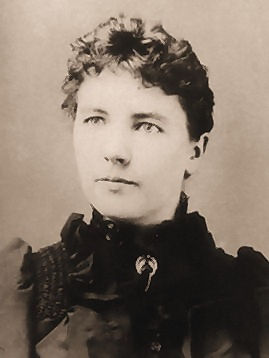~from intern Joyce Bohling

I was raised on Little House on the Prairie books by Laura Ingalls Wilder. My mother would read the books to me each evening at bedtime. I had the Little House paper dolls and even, once, picked up the Little House cookbook in the children’s section of my local library. When I was getting into my “tween” years, I read Farmer Boy, an account of childhood stories about Laura Ingalls Wilder’s husband, Alamanzo. Of all of Wilder’s books, Farmer Boy sticks most clearly in my memory.
As those who read the books growing up will know, Wilder was born Laura Ingalls in Pepin, Wisconsin in 1867. She had an older sister, Mary, and later two younger sisters, Carrie and Grace. Wilder also had a younger brother, Charles Jr., who died at 9 months of age. Wilder chose to omit her younger brother from her autobiographical Little House series, perhaps because she wrote for a young audience and focused on joyful tales with happy endings.
The Ingalls moved around frequently, migrating to Kansas, Minnesota, Iowa, and South Dakota. When her family settled near De Smet, South Dakota, Wilder, age 15, received her teaching certificate and began to teach in a one-room schoolhouse. A family friend named Alamanzo Wilder often gave her rides to and from her family home and the school 12 miles away. Alamanzo and Laura courted and were married in 1885, after which they moved to Missouri to start their own homestead, which they named Rocky Ridge.
In the 1920s, the Wilders’ only surviving daughter, Rose, encouraged her mother to write about her early life. Wilder’s first-person account of her childhood between the ages of three and eighteen, Prairie Girl, was repeatedly rejected by publishers. Wilder, though, didn’t give up. She changed the point of view of the narration to third person, referring to herself as “Laura” and telling the story of the whole family in a way that would be relatable and entertaining to young children.
Wilder’s first book, Little House in the Big Woods, was published in 1932 when Wilder was 65. She went on to publish many more books about her childhood, including Little House on the Prairie (1935), On the Banks of Plum Creek (1937), By the Shores of Silver Lake (1939), The Long Winter (1940), Little Town on the Prairie (1941), and These Happy Golden Years (1943). The story of her husband’s childhood, Farmer Boy, was published in 1933.
Wilder died in 1957 at the age of 90. Her books continued to gain popularity long after her death. They were re-issued with illustrations from Garth Williams in 1953 (the illustrations after which my paper dolls were modeled). A television show based on Wilder’s work called Little House on the Prairie ran from 1974 to 1982, creating interest in the books among my parents’ generation, who, in turn, shared them with me and many children in my generation.